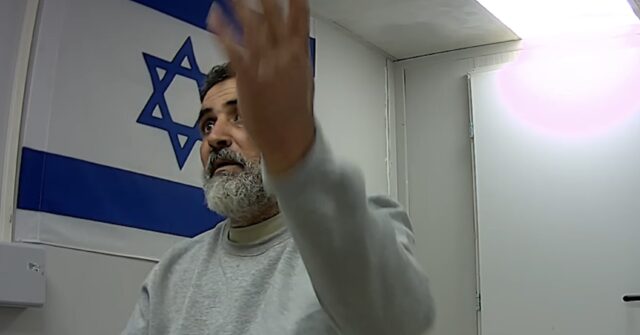The Israel Defense Forces (IDF) recently released a video showcasing the interrogation of a captured Hezbollah terrorist named Wadah Kamel Younis. This incident follows significant upheaval within Hezbollah, particularly after the reported killing of its leader, Hassan Nasrallah, on September 27. The Israeli airstrike that eliminated Nasrallah struck the organization’s underground headquarters in Beirut, Lebanon, marking a critical blow to Hezbollah’s operational leadership. The death of Nasrallah, coupled with the loss of other senior figures, has left the organization in a state of disarray, causing ripple effects that are evident in the testimonies of captured militants like Younis.
Captured during recent military operations in southern Lebanon, Younis provided firsthand accounts of the chaos following the airstrikes. He described his survival amidst the attacks and noted the disconnection from fellow militants, indicating a breakdown of order within the organization. Specifically, Younis revealed that many of his comrades had “fled” the scene after the death of Nasrallah, reflecting a sense of panic and lack of cohesion among Hezbollah forces. His statements underscore a broader narrative of fear and disillusionment within the ranks, raising questions about the group’s ability to maintain control and execute its military objectives following such devastating leadership losses.
The IDF’s activities in southern Lebanon led to the discovery of an underground tunnel shaft linked to Hezbollah operations. During an operation last weekend, troops encircled a building containing the tunnel and located Younis, who was subsequently apprehended. He was interrogated on-site before being transferred to an Israeli detention facility for further questioning. The IDF’s strategic initiative to target and capture Hezbollah members is part of a broader effort to gather intelligence on the organization’s strategies, operations, and morale in the wake of Nasrallah’s assassination.
In his interrogation, Younis specifically referenced the departure of key commanders from their positions, stating that even the area commander and his deputy had abandoned their posts early in the conflict. His comments regarding the Radwan Force—a notorious Hezbollah unit—paint a grim picture of internal dissent and lack of commitment among fighters. Younis described these militants as “people without religion” who were motivated primarily by financial incentives, contrasting their stated aims of retaliation against Israeli forces with their actual behavior when faced with danger.
In a separate development, it was reported that three other members of Hezbollah’s Radwan Force were also captured while hiding in a different location in southern Lebanon. This group was discovered in a building containing a cache of weapons and supplies, suggesting that even amid chaos, Hezbollah is maintaining some operational bases. These captured individuals, similar to Younis, were interrogated by Israeli forces and may provide critical insights into Hezbollah’s strategic planning and resource management during these tumultuous times.
The ongoing conflict and the intelligence gleaned from these interrogations underscore the significant challenges faced by Hezbollah following the loss of its leader. With the organization reportedly struggling with morale and unity, Israel appears to be exploiting these vulnerabilities to its advantage. As Hezbollah navigates the aftermath of Nasrallah’s death, the IDF’s intelligence-gathering efforts, through captured operatives, will be pivotal in shaping future military engagements and the broader geopolitical landscape in the region. The implications of these developments are likely to resonate beyond military strategy, influencing political dynamics and the relationships between Lebanon, Israel, and other regional players.

